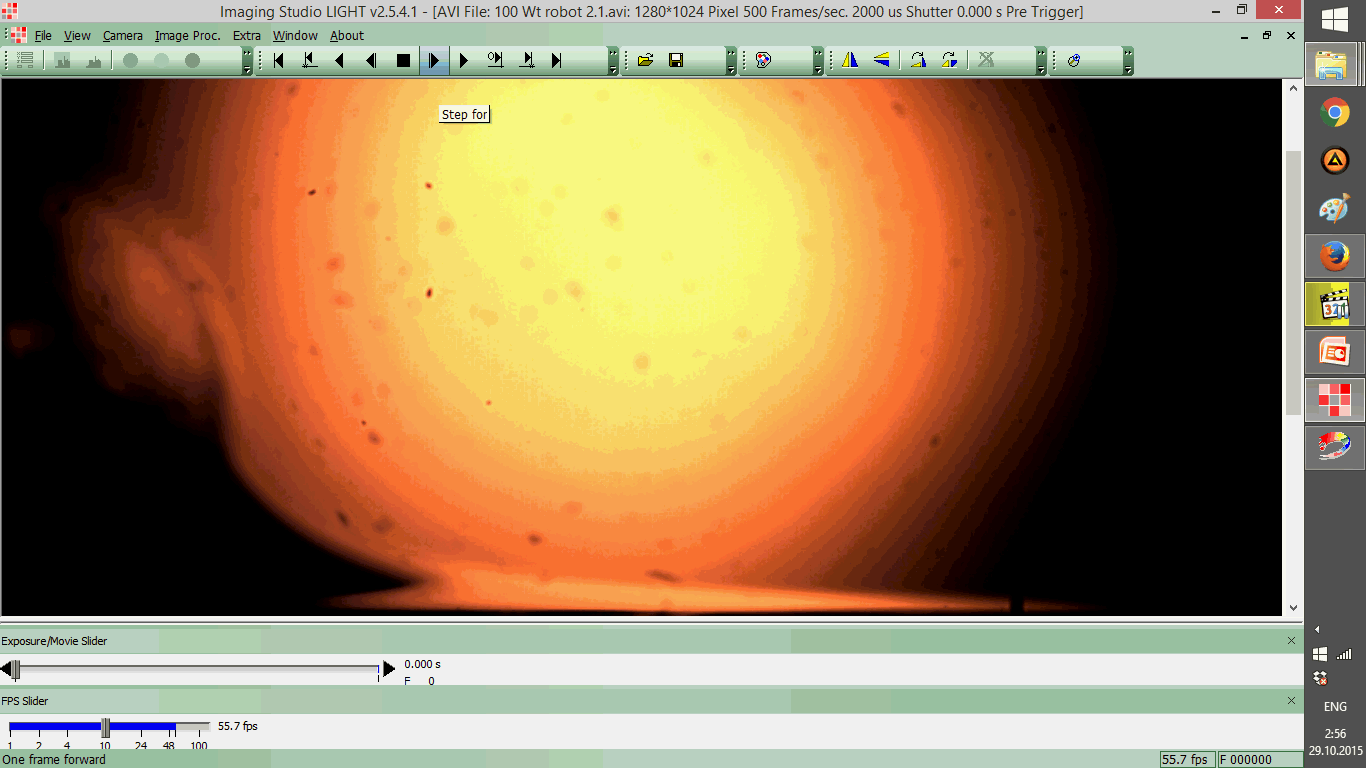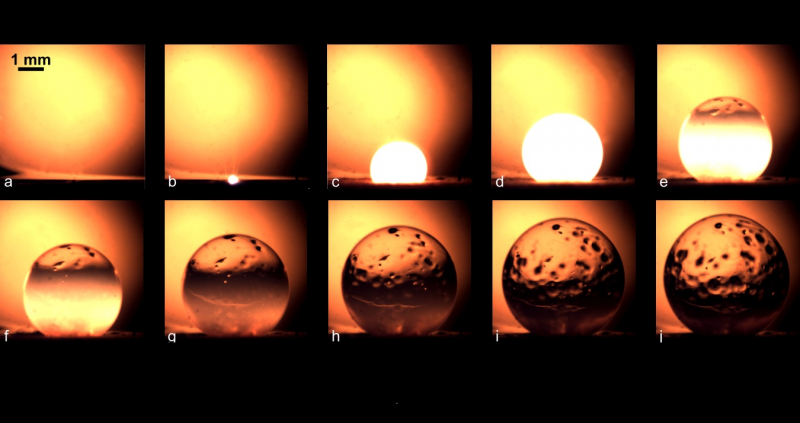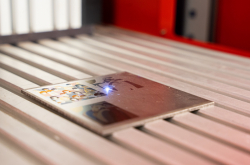This effect was discovered by accident. While trying to improve the quality of laser drilling in ceramics by adding water to the target area, scientists noticed small – from one to nine mm in diameter – spherical shapes that formed around the drilled holes. The animated image seen below is taken from a real-time recording of the effect obtained with the help of an AOS X-MOTION high-speed camera with a 500 fps frequency and 24x magnification. This is currently the only existing description of this phenomenon.

The research was carried out by a scientific group led by Professor Vadim Veiko at ITMO’s International Laboratory for Laser Micro- and Nanotechnologies. According to the study, the spheres are formed when water vapors seeping into porous ceramics squeeze the hot melted glass out of the affected area. As a result, the molten material expands, cools, and solidifies into a spherical shape with walls up to 100 nm thick.
The formation of these spheres triggers a complex set of thermophysical, hydrodynamic, and optical effects. At the moment, the researchers are exploring the possibilities of using these spheres as a frame for spherical optical elements such as GRIN lenses and spherical diffraction gratings.
- Sinev, D.A., Dobrina, D.A., Strusevich, A.V. et al. Special regime of liquid-assisted laser ablation of ceramics. Appl. Phys. A 122, 546 (2016)
- Dobrina D.A. Formation of a thin-walled glass sphere as a result of wet laser ablation of ceramics. Bachelor’s thesis, St. Petersburg, 2016, 45 p.
- Lebedeva E.V. Peculiarities of kinetics glass sphere formation using laser ablation of ceramics. Bachelor’s thesis, St. Petersburg, 2017, 48 p.
- Dobrina D.A. The study of laser ablation's features of aluminosilicate ceramics. Master’s thesis, St. Petersburg, 2018, 89 p.





